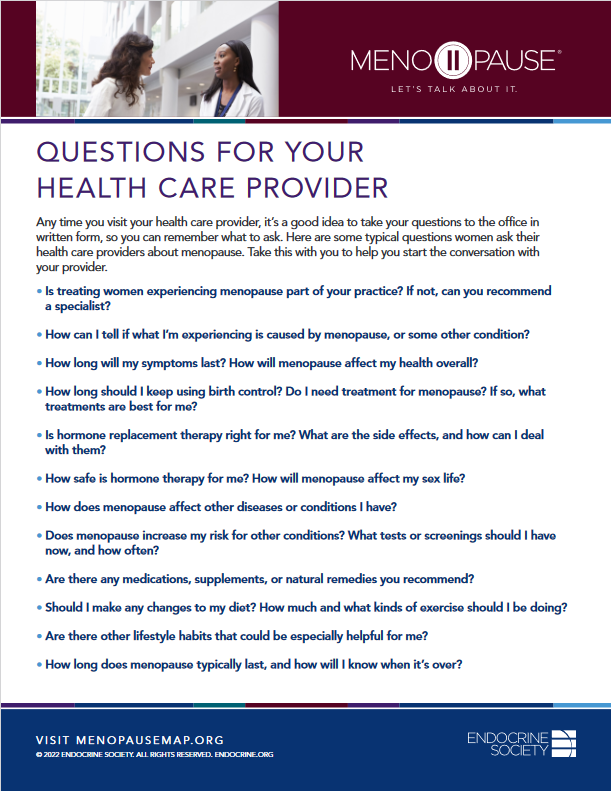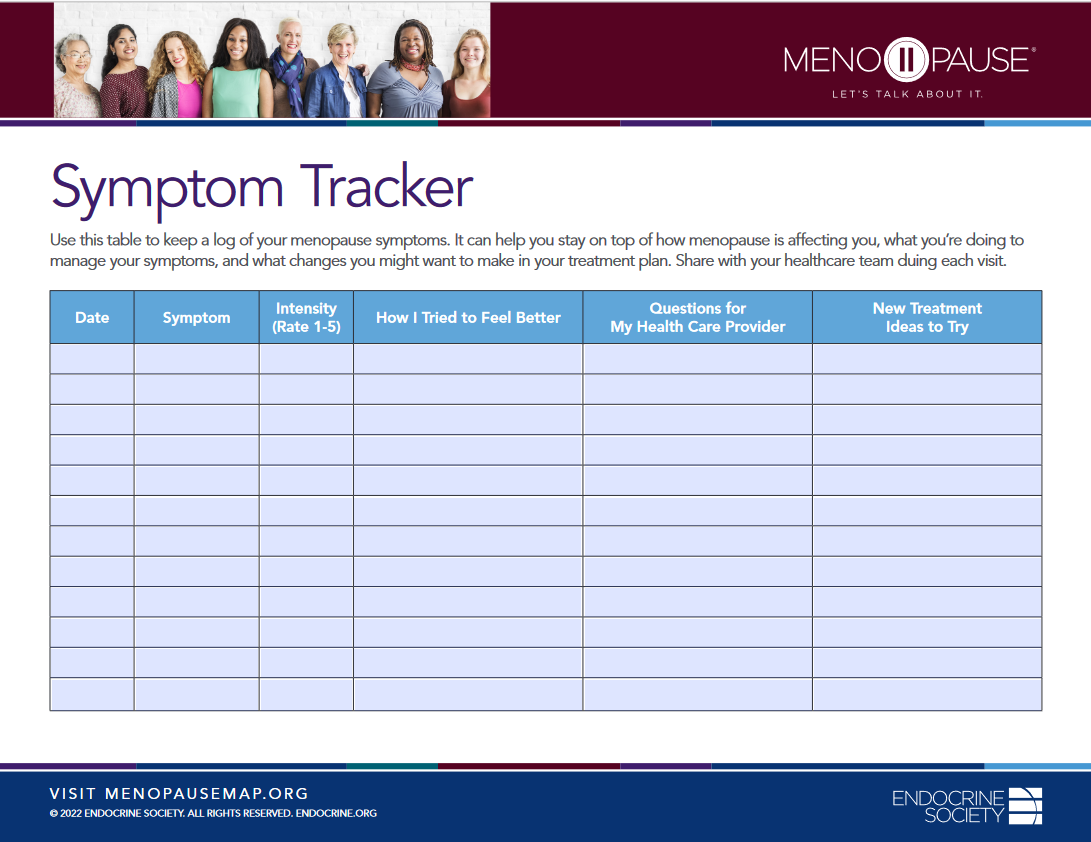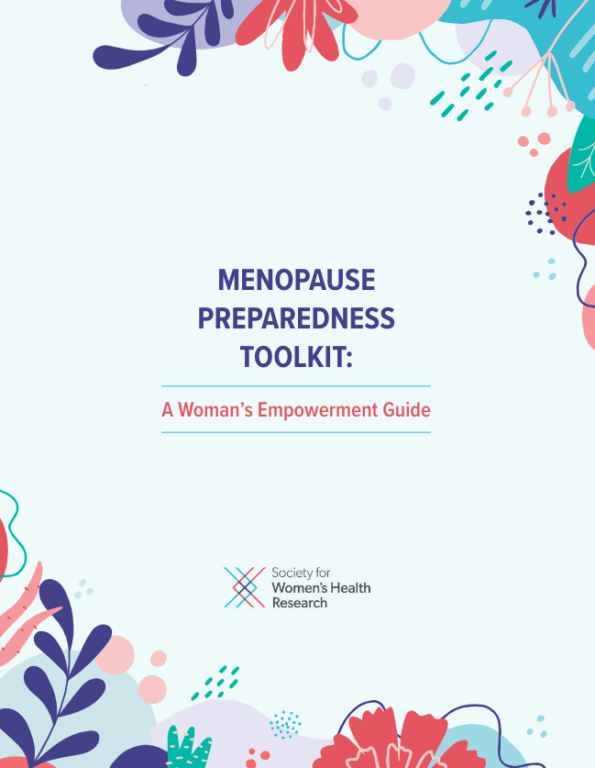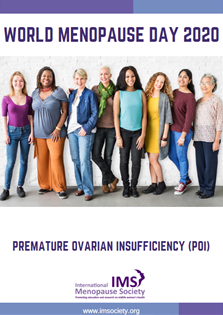“Loss of ovarian function occurring in women younger than 40 years of age is called premature ovarian insufficiency (POI). POI may also be referred to as…”.1
Umbrella
What may the Premature Ovarian Insufficiency (POI) Umbrella include?
Depending on the Source (DotS) this umbrella may include:
- Premature Ovarian Failure (POF)
- Premature Ovarian Insufficiency (POI)
- Primary Ovarian Insufficiency (POI)
Definition
What is primary ovarian insufficiency (POI)?
DotS the definition of POI may vary. In Primary Ovarian Insufficiency: Symptoms & Causes – Overview the (United States) Mayo Clinic’s definition, dated 20 October 2023, is:
 “Primary ovarian insufficiency occurs when the ovaries stop working as they should before age 40. When this happens, the ovaries don’t make the typical amounts of the hormone estrogen or release eggs regularly. The condition often leads to infertility. Another name for primary ovarian insufficiency is premature ovarian insufficiency. It also used to be called premature ovarian failure, but this term isn’t used anymore”.2
“Primary ovarian insufficiency occurs when the ovaries stop working as they should before age 40. When this happens, the ovaries don’t make the typical amounts of the hormone estrogen or release eggs regularly. The condition often leads to infertility. Another name for primary ovarian insufficiency is premature ovarian insufficiency. It also used to be called premature ovarian failure, but this term isn’t used anymore”.2 Premature Menopause
Is premature menopause the same as POI?
In Primary Ovarian Insufficiency: Symptoms & Causes – Overview the Mayo Clinic also note:
POI Common or Not
How common is POI?
In Premature Ovarian Insufficiency: How Common Is Premature Ovarian Insufficiency? You and Your Hormones, the (United States) Society for Endocrinology elaborate on:
POI and Periods
Can women with POI have periods?
In Menopause Before 40 and Spontaneous Premature Ovarian Insufficiency the Australasian Menopause Society (AMS) note:
POI and Pregnancy
Can women with POI become pregnant?
In Premature and Early Menopause: What Causes Premature and Early Menopause? POI and Fertility the (Australian) Jean Hailes for Women’s Health explain:
POI and Menopausal Symptoms
Can women with POI have menopausal symptoms?
In Menopause Before 40 and Spontaneous Premature Ovarian Insufficiency the AMS note:
POI Symptoms
What may be POI symptoms?
In Premature Ovarian Insufficiency (POI): Summary – What Are the Symptoms of Primary Ovarian Insufficiency (POI)? according to the (United States) Medline Plus:
- Hot flashes
- Night sweats
- Irritability
- Poor concentration
- Decreased sex drive
- Pain during sex
- Vaginal dryness
For many women with POI, trouble getting pregnant or infertility is the reason they go to their health care provider”.8
Hormone Therapy
For women with POI, what is one of the recommendations about hormone therapy of the Joint Position Statement By the British Menopause Society, Royal College of Obstetricians and Gynaecologists and Society for Endocrinology on Best Practice Recommendations for the Care of Women Experiencing the Menopause?
On page two in the Joint Position Statement By the British Menopause Society, Royal College of Obstetricians and Gynaecologists and Society for Endocrinology on Best Practice Recommendations for the Care of Women Experiencing the Menopause, first published online 10 June 2022, one of the recommendations is:
What is another recommendation of the Joint Position Statement?
On page four in the Joint Position Statement another recommendation is:
Chronic Disease
Is there an association between POI and chronic disease?
In Optimising Health After Early Menopause: Summary, published 05 March 2024, a paper included in The Lancet: Series From the Lancet Journal – Menopause 2024 also published on 05 March 2024, the authors note:
Early Menopause: Women’s Experiences
What is the (Australian) Healthtalk Australia’s Early Menopause: Women’s Experiences?
In Early Menopause: Women’s Experiences – Overview Healthtalk Australia elaborate on:
Women talked about being diagnosed with spontaneous early menopause, premature ovarian insufficiency (POI), medically-induced early menopause, or menopausal symptoms as a result of cancer and/or other medical treatments”.12
Health Care Provider
What if I think I have POI?
If you think you have POI it may be in your best interest to choose to talk to your health care provider about this.
In Primary Ovarian Insufficiency: Symptoms – When To See A Doctor the (United States) Mayo Clinic elaborate on:
Even if you don’t mind not having periods, see a health care professional to find out what’s causing the change. Low estrogen levels can lead to a condition that causes weak and brittle bones, called osteoporosis. Low levels of estrogen also can lead to heart disease”.13
In Primary Ovarian Insufficiency: Treatment & Therapies the Endocrine Society explain:
Health Topics A-Z
Where may I find Health Topics A-Z related to Premature Ovarian Insufficiency?
In Health Topics A-Z you may find:
Links
Where may I find Links related to Premature Ovarian Insufficiency?
Your Country may have Links similar to:
Links
This Links List to third party websites is neither comprehensive nor exhaustive. Inclusion on this Links List does not imply endorsement or recommendation. Non-inclusion on this Links List does not imply non-endorsement or non-recommendation. Third party websites are not under the control of Meno Martha International Menopause Directory. Third party websites may contain explicit medical images and/or sexual references. Please read Meno Martha International Menopause Directory’s Links Policy before proceeding to a Link. Please contact Webmaster if you experience a problem with a Link.New or Updated
- Bone Health In Women With Premature Ovarian Insufficiency/Early Menopause: A 23-Year Longitudinal Analysis [23 February 2024]
- Primary Ovarian Insufficiency: A Toolkit for the Busy Clinician
- Video: With Menstrual Irregularity, Consider Primary Ovarian Insufficiency
- Video Series-2023: Premature and Early Menopause
- Video Series-2024: Preparing for Your Menopause Health Care Visit [13 January 2024]
- Webinars: Previous – Genetic Causes of POI
- Askearlymenopause.org [Ask EM] [+ Video: What Is Early Menopause?]
- BMS TV: Premature Ovarian Insufficiency (POI)
- Be A Force for Change. Know the Signs. Get Your Heart Checked.
- Bioidentical Hormones: Are They Safer?
- Bone Health In Women With Premature Ovarian Insufficiency/Early Menopause: A 23-Year Longitudinal Analysis
- Can Combined Oral Contraceptive Be Used As A Hormone Therapy In Women With Premature Ovarian Insufficiency? [Video]
- Cognitive Behaviour Therapy (CBT) for Menopausal Symptoms
- Daisy Network
- Diagnostic Tests for Menopause
- ESHRE Guideline: Management of Women With Premature Ovarian Insufficiency
- Early Menopause: Women’s Experiences – Overview
- Early Menopause: Women’s Experiences – Resources and Information: Quick Links – 1. Question Prompt List
- Early Menopause: Women’s Experiences – Women’s Profiles
- Find A Menopause Practitioner [United States and Other]
- Find An AMS Doctor [Australasian Menopause Society i.e. Australia and New Zealand]
- Find Your Nearest BMS Menopause Specialist [British Menopause Society]
- Follicle-Stimulating Hormone (FSH) Blood Test
- Follicle-Stimulating Hormone (FSH) Levels Test
- Fragile X and Premature Ovarian Insufficiency Webinar
- Hormone Therapy: Is It Right for You?
- Hot Flashes
- Hot Flashes: What Can I Do? [+ Video: What Are the Signs and Symptoms of Menopause?]
- Menopause: Information for Partners
- Is Premature Ovarian Insufficiency Associated With Mortality? A Three-Decade Follow-Up Cohort
- Landscape of Pathogenic Mutations In Premature Ovarian Insufficiency
- Later Years (Around 50 Years and Over): Menopause and Post Menopause Health – Early and Premature Menopause [+ Video: Menopause Only Happens In Your 50s]
- Luteinizing Hormone (LH) Levels Test
- Mayo Clinic Minute: Help With Hot Flashes Due To Menopause [+ Video]
- Mayo Clinic Minute: How Lifestyle Changes May Help Manage Menopause Symptoms [+ Video]
- Menopause
- Menopause Before 40 and Spontaneous Premature Ovarian Insufficiency
- Menopause Map: Downloadable Resources – My Personal Path Print Tools: Questions for Your Health Care Provider

- Menopause Map: Downloadable Resources – My Personal Path Print Tools: Symptom Tracker

- Menopause Mindfulness: Understanding the Many Paths To Menopause
- Menopause Patient Information [Videos] 2. Talking To Your GP About Menopause
- Menopause Preparedness Toolkit Video Series: Mindfulness & Wellbeing During the Menopause Transition
- Menopause Preparedness Toolkit Video Series: Treating Vasomotor Symptoms of Menopause
- Menopause Preparedness Toolkit Video Series: Understanding Menstrual Health and Menopause
- Menopause Preparedness Toolkit: A Woman’s Empowerment Guide

- Menopause Ruining Your Sex Life?
- Menopause Symptoms: Mayo Clinic Expert Outlines Hormone and Nonhormonal Therapies
- Menopause Treatments: What Works, What Doesn’t
- Menopause and Mental Health
- Menopause: Diagnosis and Management – Information for the Public: Questions To Ask About Menopause [NICE Guideline]
- Menopause: Understanding the Changes and Finding Relief | Dr Susan Davis | The Proof Podcast EP 256
- Mood and the Menopause
- N Z Early Menopause Support Group [New Zealand]
- National Center for Complementary and Integrative Health: Herbs At A Glance
- National Center for Complementary and Integrative Health: How Safe Is This Product or Practice?
- Navigating Menopause Together: How Partners Can Help
- Navigating Menopause: Expert Insights and Solutions | Dr Susan Davis | The Proof Podcast EP 245
- Non-Estrogen Treatments for Menopausal Symptoms
- Nonhormone Treatments for Hot Flashes and Night Sweats
- Optimising Health After Early Menopause
- Premature Ovarian Insufficiency
- Premature and Early Menopause
- Premature and Early Menopause
- Premature and Early Menopause
- Premature and Early Menopause: Managing Premature and Early Menopause
- Premature and Early Menopause: Symptoms of Premature and Early Menopause
- Premature and Early Menopause: What Causes Premature and Early Menopause? [+ Video]
- Primary Ovarian Insufficiency
- Primary Ovarian Insufficiency
- Primary Ovarian Insufficiency
- Primary Ovarian Insufficiency
- Primary Ovarian Insufficiency: A Toolkit for the Busy Clinician
- Primary Ovarian Insufficiency: Diagnosis & Treatment – Coping and Support
- Primary Ovarian Insufficiency: Diagnosis & Treatment – Lifestyle and Home Remedies
- Primary Ovarian Insufficiency: Diagnosis & Treatment – Preparing For Your Appointment
- Primary Ovarian Insufficiency: Questions To Ask Your Healthcare Provider
- Primary Ovarian Insufficiency: Summary – How Is Primary Ovarian Insufficiency (POI) Diagnosed?
- Primary Ovarian Insufficiency: Summary – How Is Primary Ovarian Insufficiency (POI) Treated?
- Primary Ovarian Insufficiency: Summary – What Causes Primary Ovarian Insufficiency (POI)?
- Primary Ovarian Insufficiency: Symptoms & Causes – Causes [+ Video: Ovulation]
- Spontaneous Premature Ovarian Insufficiency
- Supporting A Loved One Through Menopause
- The Lancet: Series From the Lancet Journals – Menopause 2024
- The Truth About Menopause Supplements | Dr Sarah Berry
- Tips To Help Manage Menopause Symptoms
- Turner Syndrome
- Turner Syndrome
- Understanding Fragile X
- Using Natural Therapies In the Menopause Transition – Webinar
- Video Series-2022: Hormone Therapy: Understanding the Risks and Benefits
- Video Series-2022: Irregular Menstrual Cycles What’s Normal and What’s Abnormal?
- Video Series-2023: Premature and Early Menopause
- Video Series-2024: Preparing for Your Menopause Health Care Visit
- Video: With Menstrual Irregularity, Consider Primary Ovarian Insufficiency
- Videos and Podcasts: Videos – Interviews: Bone Health and Premature Ovarian Insufficiency
- Videos & Podcasts: Videos – Interviews: Preventing Bone Loss At Menopause
- Videos and Podcasts: Videos – Interviews: When Your Periods Leave Too Early
- Webinars: Previous – Approach To Bone Health In the Perimenopause and Postmenopause?
- Webinars: Previous – Genetic Causes of POI
- Webinars: Previous – Non-Hormonal Pharmacological Interventions For VMS
- Webinars: Previous – POI: A New Era World Menopause Day Theme
- What Everyone Should Know About Menopause Symptoms
- What Causes Menopause? Primary Ovarian Insufficiency (POI)
- What Is POI
- When Menopause Comes Early: Symptoms & Treatment
 World Menopause Day 2020 – Patient Information Leaflet: Premature Ovarian Insufficiency (POI) [Multiply Languages]
World Menopause Day 2020 – Patient Information Leaflet: Premature Ovarian Insufficiency (POI) [Multiply Languages]
Sources
Where may I find the Sources quoted?
You may find the Sources quoted at:
Sources
- Spontaneous Premature Ovarian Insufficiency: Definitions and Epidemiology. Content Updated: September 2020. Australasian Menopause Society https://www.menopause.org.au/hp/information-sheets/742-spontaneous-premature-ovarian-insufficiency Accessed: 29 March 2024
- Primary Ovarian Insufficiency: Symptoms – When To See A Doctor. 20 October 2023. Mayo Clinic https://www.mayoclinic.org/diseases-conditions/premature-ovarian-failure/symptoms-causes/syc-20354683 Accessed: 29 March 2024
- Primary Ovarian Insufficiency: Symptoms – When To See A Doctor. 20 October 2023. Mayo Clinic https://www.mayoclinic.org/diseases-conditions/premature-ovarian-failure/symptoms-causes/syc-20354683 Accessed: 29 March 2024
- Premature Ovarian Insufficiency: How Common Is Premature Ovarian Insufficiency. Last Reviewed: April 2022. You and Your Hormones, An Education Resource From the Society for Endocrinology https://www.yourhormones.info/endocrine-conditions/premature-ovarian-insufficiency/ Accessed: 29 March 2024
- Menopause Before 40 and Spontaneous Premature Ovarian Insufficiency. Content Updated: October 2020. Australasian Menopause Society https://www.menopause.org.au/health-info/fact-sheets/menopause-before-40-and-spontaneous-poi Accessed: 29 March 2024
- Premature and Early Menopause: What Causes Premature and Early Menopause? POI and Fertility. Last Updated: 07 December 2023. Last Reviewed: 19 August 2022. Jean Hailes for Women’s Health https://www.jeanhailes.org.au/health-a-z/menopause/premature-early-menopause Accessed: 29 March 2024
- Menopause Before 40 and Spontaneous Premature Ovarian Insufficiency. Content Updated: October 2020. Australasian Menopause Society https://www.menopause.org.au/health-info/fact-sheets/menopause-before-40-and-spontaneous-poi Accessed: 29 March 2024
- Primary Ovarian Insufficiency: Summary – What Are the Symptoms of Primary Ovarian Insufficiency (POI)? Last Updated: 05 May 2021. MedlinePlus https://medlineplus.gov/primaryovarianinsufficiency.html Accessed: 29 March 2024
- Hamoda, H., Mukherjee, A., Morris, E., Baldeweg, S. E., Jayasena, C. N., Briggs, P., Moger, S. Joint Position Statement By the British Menopause Society, Royal College of Obstetricians and Gynaecologists and Society for Endocrinology on Best Practice Recommendations for the Care of Women Experiencing the Menopause. First Published Online 10 June 2022:2. https://journals.sagepub.com/doi/full/10.1177/20533691221104879 Accessed: 29 March 2024
- Hamoda, H., Mukherjee, A., Morris, E., Baldeweg, S. E., Jayasena, C. N., Briggs, P., Moger, S. Joint Position Statement By the British Menopause Society, Royal College of Obstetricians and Gynaecologists and Society for Endocrinology on Best Practice Recommendations for the Care of Women Experiencing the Menopause. First Published Online 10 June 2022:4. https://journals.sagepub.com/doi/full/10.1177/20533691221104879 Accessed: 29 March 2024
- Mishra, G. D. et al. Optimising Health After Early Menopause: Summary. 05 March 2024 https://www.thelancet.com/journals/lancet/article/PIIS0140-6736(23)02800-3/fulltext Accessed: 29 March 2024
- Early Menopause: Women’s Experiences – Overview. Healthtalk Australia https://healthtalkaustralia.org/early-menopause-experiences-and-perspectives-of-women-and-health-professionals/overview-womens-experiences/ Accessed: 29 March 2024
- Primary Ovarian Insufficiency: Symptoms – When To See A Doctor. 20 October 2023. Mayo Clinic https://www.mayoclinic.org/diseases-conditions/premature-ovarian-failure/symptoms-causes/syc-20354683 Accessed: 29 March 2024
- Primary Ovarian Insufficiency: How Is POI Treated? Last Updated: 24 January 2022. Endocrine Society https://www.endocrine.org/patient-engagement/endocrine-library/primary-ovarian-insuffiency Accessed: 29 March 2024



